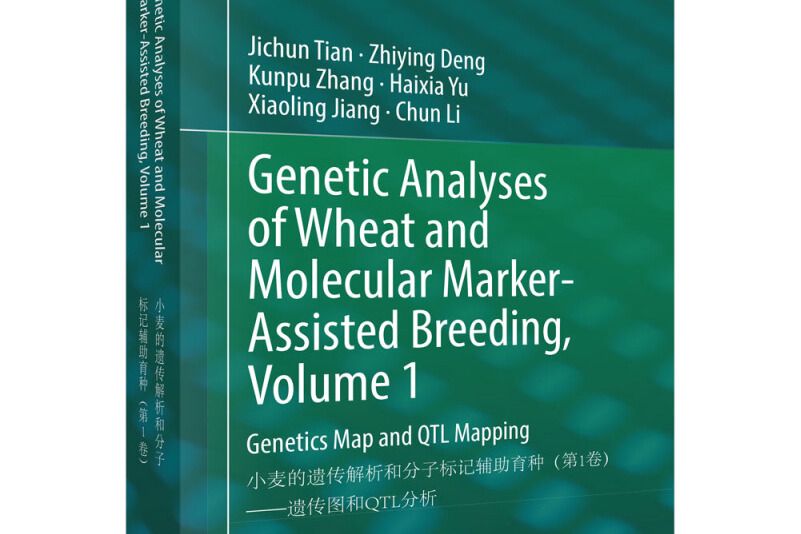內容簡介
Modeim biotechnologies, prevalent in nearly all aspects of crop breeding programs, have been developing so rapidly that one could anticipate new breakthroughs on a regular basis. The invention of polymerase chain reaction (PCR) in 1985 by Kary Mullis (USA), for example, has allowed us to dissect various crops' quantitative trait loci (QTLs) at the level of a single gene. According to the statistics, more than 4200 genetic maps of various crops have been constructed by the end of 2012 using various molecular markers, many of which are SSR maps. These maps have made it possible to conduct the QTL mappings and efficacy analyses on traits associated with plant morphology, yield, quality, as well as stress resistance. Molecular markers developed by QTL mappings have been utilized in marker-assisted selections (MASs), resulting in enhanced tracking efficiency of major effect genes and QTLs, thereby accelerating germplasm development and the speed of variety development. With the advent of these breeding trends, Peleman and Vander Vort (Belgium Academy of Sciences) proposed a novel breeding concept in 2003, know{i as "breeding by design" which will undoubtedly become a mainstream technology in crop genetic improvement and enhance the in-depth crop breeding significantly in the near future. However. wheat "molecular breeding" is currently at the conceptual phase. As an allohexaploid, the wheat genome is much larger than that of rice, corn, and many other crops. Adding to the challenges, the genome sequencmg is incomplete. The lack of progress in wheat molecular breeding is, in a similar fashion, due to the fact that most of the traits responsible for wheat yield, quality, and various others are controlled by multiple QTLs. Furt.hermore, some issues derived from MAS per se have yet to be resolved. This is evidenced by the fact that grain weight of a specific lineage containing large grain QTL gene is not necessarily high when selection of grain weight within the hybrid progenies is based on a single or a few QTL markers. This is especially true when selection is conducted within different selection populations with diverse genetic backgrounds, resulting in significant incertitude and perplexity for the application of MAS in wheat.
圖書目錄
1 The Concept and Research Progress of Quantitative Traits
1.1 History of Molecular Quantitative Genetics
1.2 Concept and Genetic Characters of Quantitative Traits
1.3 Tools for Quantitative Trait Studies
1.3.1 Types of Molecular Markers
1.3.2 Applications of Molecular Markers
1.4 Progress and Prospect of QTL Mapping
1.4 ,1 Methods of QTL Mapping
1.4.2 QTL Mapping Progress
1.4.3 Application Prospects of QTL Mapping
References
2 Genetic Analysis Methods of Quantitative Traits in Wheat
2.1 The Types and Quality of Genetic Populations
2.1.1 The Types of Genetic Populations
2.1.2 Genetic Population Construction and Some Key Notes to Consider
2.1.3 Quality of Genetic Populations
2.2 Types and Applications of Genetic Markers
2.2.1 Morphological Markers
2.2.2 Cytological Markers
2.2.3 Biochemical Markers
2.2.4 DNA Molecular Markers
2.3 Statistical and Mapping Method of Quantitative Traits
2.3.1 The Principle of QTL Mapping
2.3.2 Methods of QTL Mapping
2.4 New Methods of QTL Mapping
2.4.1 Conditional QTL
2.4.2 eQTL Mapping Method
2.4.3 QTL Mapping Methods of New Gene Mining Germplasm
References
3 Construction of Molecular Genetic Map of Wheat
3,1 Genetic Map and Construction Methods
3.1.1 Concept of Genetic Map
3.1.2 Construction Methods of Genetic Map
3.2 Genetics Map Construction
3.2.1 Genetic Map Construction Using DH Population Derived from Huapei 3 x Yumai 57
3.2.2 Genetic Map Constructed Using RIL Population Derived from Nuomai 1 X Gaocheng 8901
3.2.3 Genetic Map Constructed Using RIL Population Derived from Shannong 01-35 x Gaocheng 9411
3.2.4 High-Density Genetic Linkage Map Constructed Using SNP Markers and Others Markers
3.2.5 High-Density Genetic Linkage Map Constructed Using SNP Markers in Natural Population
3.2.6 Genetics Map Constructed Using a Wheat Backbone Parent "Aimengniu" and Derived Lines
3.3 Research Progress of Genetic Map Construction
3.3.1 Comparsion of the Genetic Map with that of Previous Studies
3.3.2 Summary of Wheat Genetics Maps
References
4 Genetic Detection of Main Yield Traits in Wheat
4.1 Experimental Populations and Methods
4.1.1 Experimental Populations and Field Experimental Design
4.1.2 Traits Evaluation and Statistical Analysis
4.2 QTL Mapping for Main Yield Traits Using Different Populations
4.2.1 QTL Mapping for Spike-Related Traits
4.2.2 QTL Mapping for Grain Related Traits
4.2.3 The Summary and Comparison of QTL MappingResults for Main Yield Traits Among Three Populations
4.3 QTL Mapping for Wheat Tiller Number in Different Period Using a DH population and an Immortalized F2 Population
4.3.1 Research Materials and Methods of Wheat Tiller Character
4.3.2 QTL Mapping for Wheat Tiller Characterin Different Period
……
5 Genetic Detection of Main Quality Traits in Wheat
6 Genetic Analysis of Main Physiological and Morphological Traits
7 Genetic Dissection of Stress-Tolerance Traits in Wheat
Afterword

